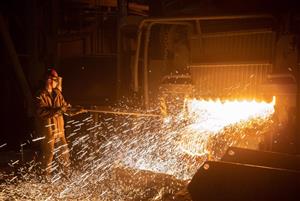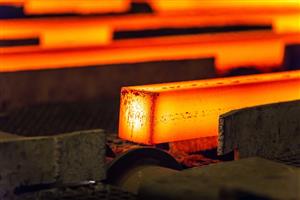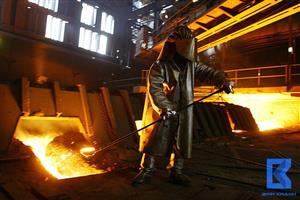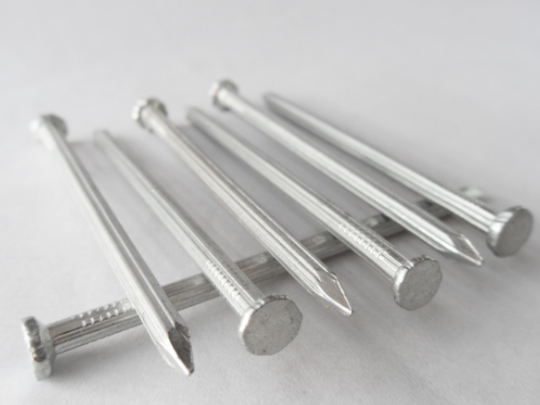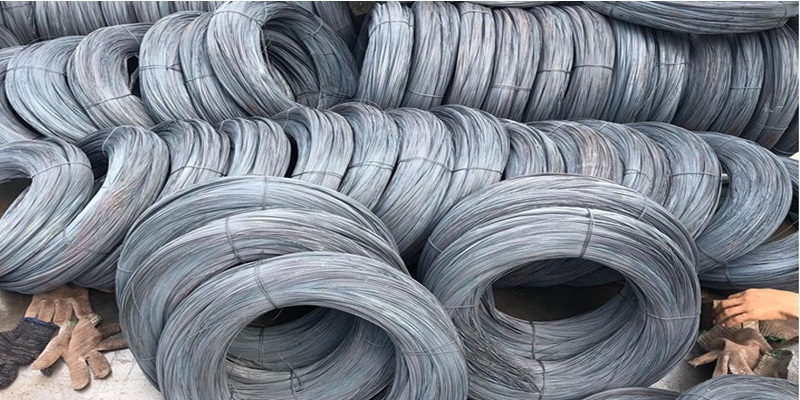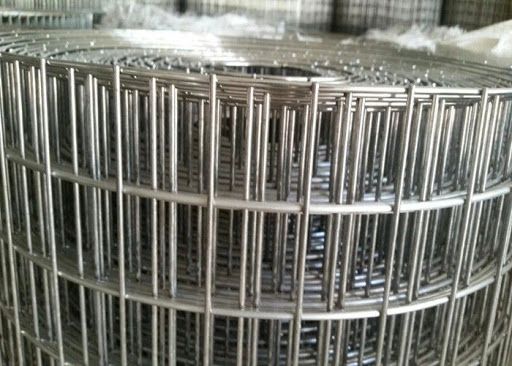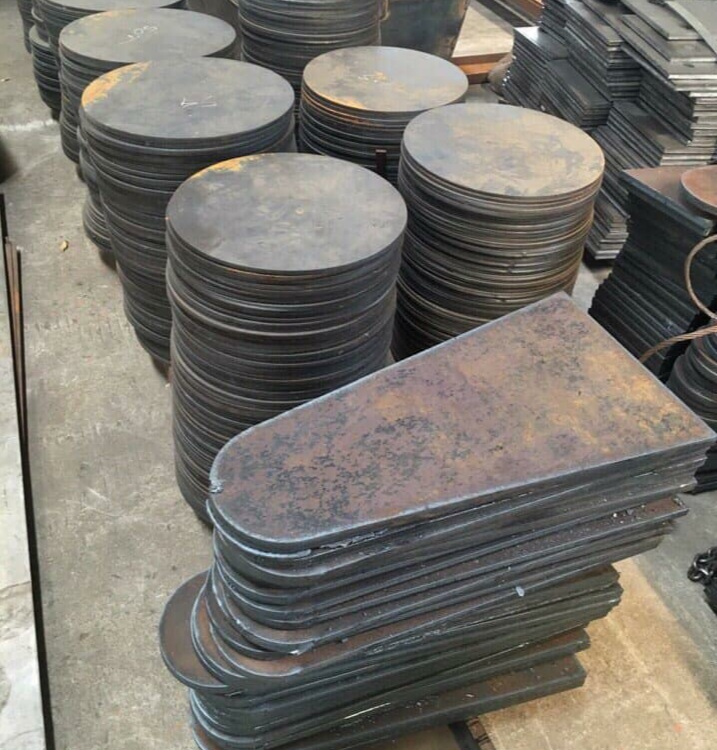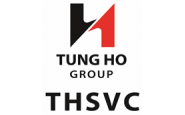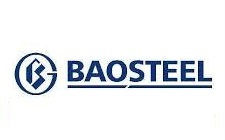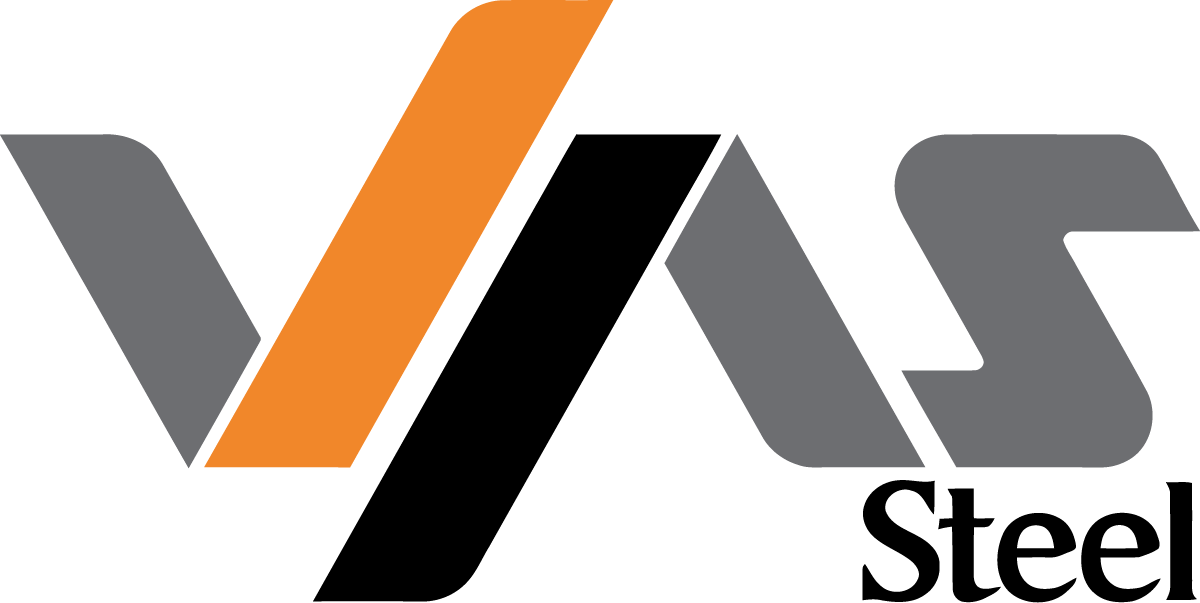Dinh Quoc Thai, General Secretary of the Vietnam Steel Association, said that the prediction that the steel industry will recover in the second half of 2023 seems "a bit optimistic" when the third quarter enters the rainy season and coincides with the lonely month. .
The market hasn't made a bottom yet
"The hardest part of the steel industry is over," said Mr. Tran Dinh Long, Chairman of Hoa Phat Group JSC and many other leaders of large steel companies such as Hoa Sen and Nam Kim in the first quarter. when commenting on the steel market.
At that time, most businesses in the industry thought that the market had bottomed and would gradually recover from the second quarter or the beginning of the third quarter at the latest.
In fact, in the first months of the year, there were signs of a recovery when steel prices continuously increased from about 14.6 million VND/ton from December 2022 to nearly 15.9 million VND/ton in early April. Besides, the real estate market also appeared more supportive policies to help businesses overcome the difficult period; Public investment projects have also been promoted.
However, what happened next was not as expected. Construction steel prices experienced 14 declines, even during the peak construction season. As of July 19, the price of construction steel was at VND 13.9 million/ton, even lower than the price that businesses considered the "bottom" of VND 14.6 million/tael at the end of the last year.
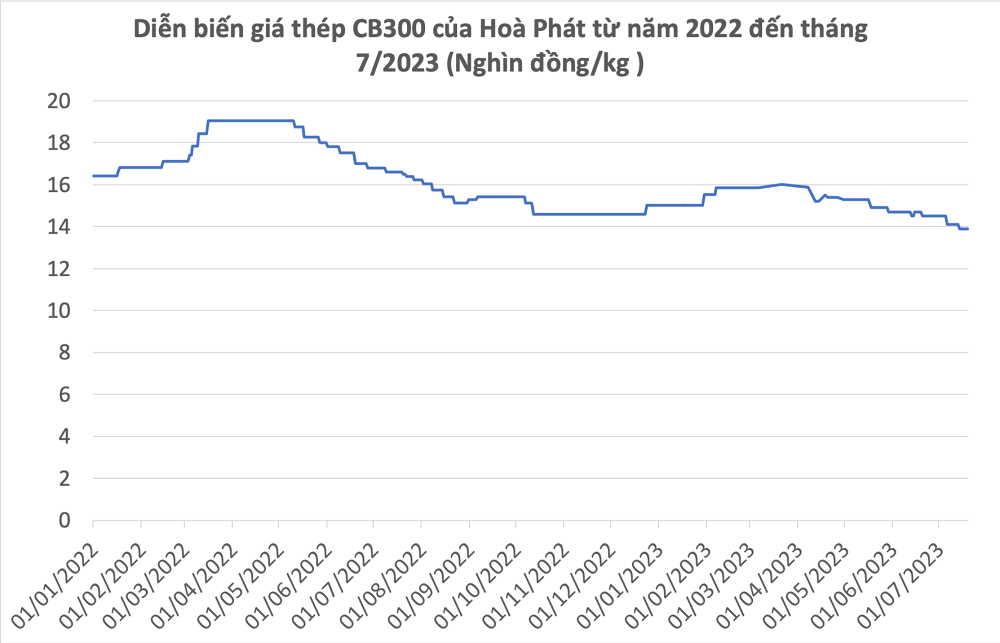
The Vietnam Steel Association (VSA) said that weak steel demand in most regions of the world and negative sentiment have affected the selling price of finished steel. The downward trend in global steel prices is further reinforced when Chinese steel enterprises are looking for ways to boost exports at a rapid rate of price decline to compete.

Data: Investing
In May alone, domestic factories had to adjust the selling price of construction steel 5 times, the reduction of 100,000 - 200,000 VND/ton/time, depending on the type, but the market's consumption was still weak.
During the price reduction on May 29, many businesses simultaneously guaranteed prices and continued to guarantee goods sold in the civil market. Meanwhile, the real estate market has not shown a positive signal again, a few new social housing projects have not been implemented much.
“Steel demand this year is down by 25%. There has never been a year when the demand has dropped as sharply as this year, mainly due to the decline in real estate”, Mr. Pham Cong Thao - Deputy General Director of Vietnam Steel Corporation - JSC shared with us on the sidelines of a conference on regulation. new EU regulation regarding carbon emissions in the steel industry.
According to him, to determine whether the steel industry has bottomed or not at this time is also very difficult because domestic demand is still very weak.
Currently, over 80% of the company's steel is consumed in the domestic market. However, Mr. Thao said that competition in the country is getting fiercer, so the company is planning to expand more export markets.
According to VSA's data, construction steel output in June reached more than 738,000 tons, down 9.1% compared to May and 20% lower than the same period last year.
Sales reached 874,000 tons, down 5.7% compared to May and 14.2% lower than June 2022. In which, export of construction steel decreased by 21.5% over the same period to 149,623 tons. On a quarterly basis, construction steel consumption in the second quarter of this year was 12% lower than the same period last year, at 2.5 million tons.
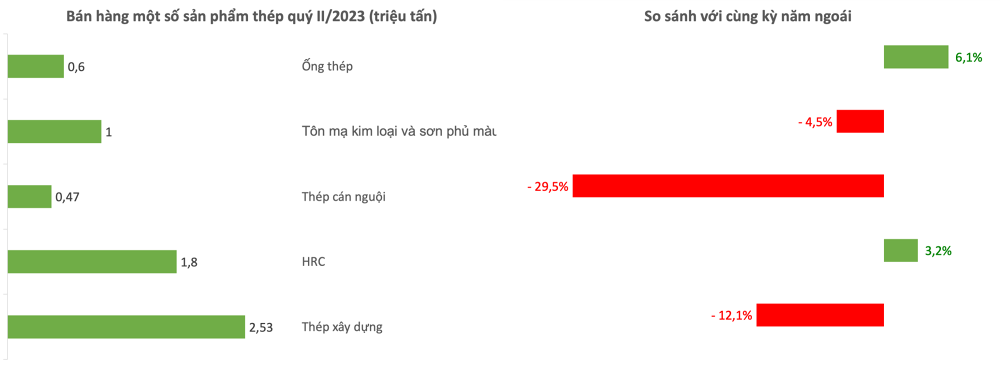
Data: Investing
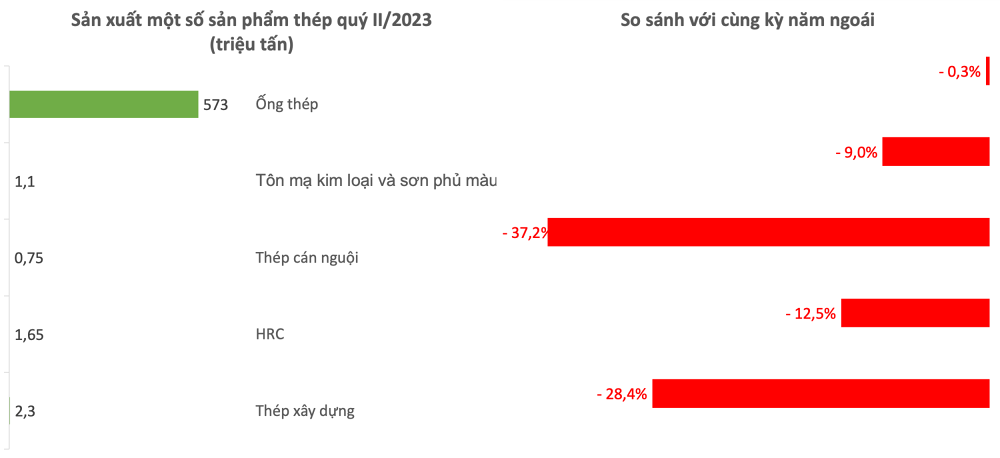
Data: Investing
Thus, in the first half of this year, sales of construction steel decreased by 23% year-on-year to about 5 million tons. While production also decreased by nearly 26% to 5 million tons.
"The bottom-seeking trend of construction steel prices is likely to continue in the near future," VSA said.
Mr. Dinh Quoc Thai, General Secretary of VSA exchanged with the writer: "Initially, the association predicted that the steel industry would recover in the second half of this year, but at this point, we seem to be a bit optimistic because this quarter is still very weak. entangled in the stormy season and had a ghost month. Every year in the 7th lunar month in Vietnam, few civil works start construction. That is why it will take the end of this quarter and the beginning of the fourth quarter to recover.”
As of July 19, only 1 business has announced the financial statement of the second quarter, namely Thai Nguyen Iron and Steel (Tisco) with a loss of nearly 100 billion dong in the second quarter of 2023, which is also the biggest loss in a decade. of the company.Gross profit margin narrowed from 3.1% in the same period last year to 0.7% this quarter.
Looking forward to public investment projects
In the gloomy context of the current real estate and civil construction market, some businesses look to public investment projects.
Deputy Minister of Planning and Investment Tran Quoc Phuong said that by the end of June 30, the whole country had disbursed more than 215 trillion VND, reaching 30.49% of the plan, higher than the figure of 27.75% last year. . In particular, this year the planned disbursement value is even higher than last year.
Most recently, at the end of June, the "super project" of Ring Road 4 of the Capital Region was started with a implementation period of 4 years, expected to be completed in 2027. Total project investment is 85,813 billion VND. copper.
Tran Thi Khanh Hien, Director of Analysis Division, VNDirect Securities JSC, said that the steel industry still has expectations from the promotion of public investment from the Government (accounting for 18% of steel supply), in which the Long Thanh airport project contributed to mitigate the decline in demand of the steel industry.
“We expect public investment disbursement in 2023 to increase by 20-25%, including the construction of Long Thanh airport on schedule,” said Ms. Hien.
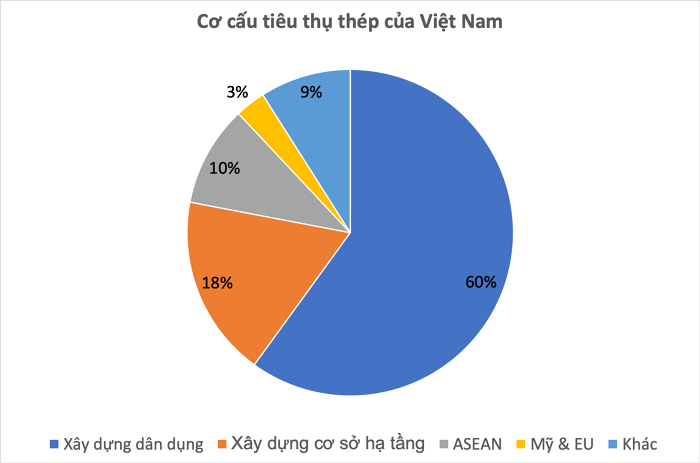
Data: VNDirect, VSA
“I expect public investment projects will help improve domestic steel demand, the government itself is also promoting credit a lot, continuously reducing interest rates. Therefore, I expect demand to improve from the fourth quarter," Thao said.
According to Mr. Thai, in the field of public investment, the steel industry expects more from bridge and culvert construction projects because these are projects that consume a lot of steel. As for road construction projects, the benefit level is only "indirect" in items such as railings. Other larger components such as road surface are mainly plastic, soil, sand and not much steel because currently Vietnam still uses traditional technology.
“We expect more from the improvement of highway works with the use of reinforced concrete roads and viaducts for the Mekong Delta,” said Mr. Thai.
According to him, VSA and other building material associations have also submitted to the Prime Minister a proposal that should not build a regular highway, but should build a viaduct in this area to ensure safety and durability. steady. The Prime Minister has also directed the study of this proposal.
Vietnambiz
 English
English  Vietnamese
Vietnamese
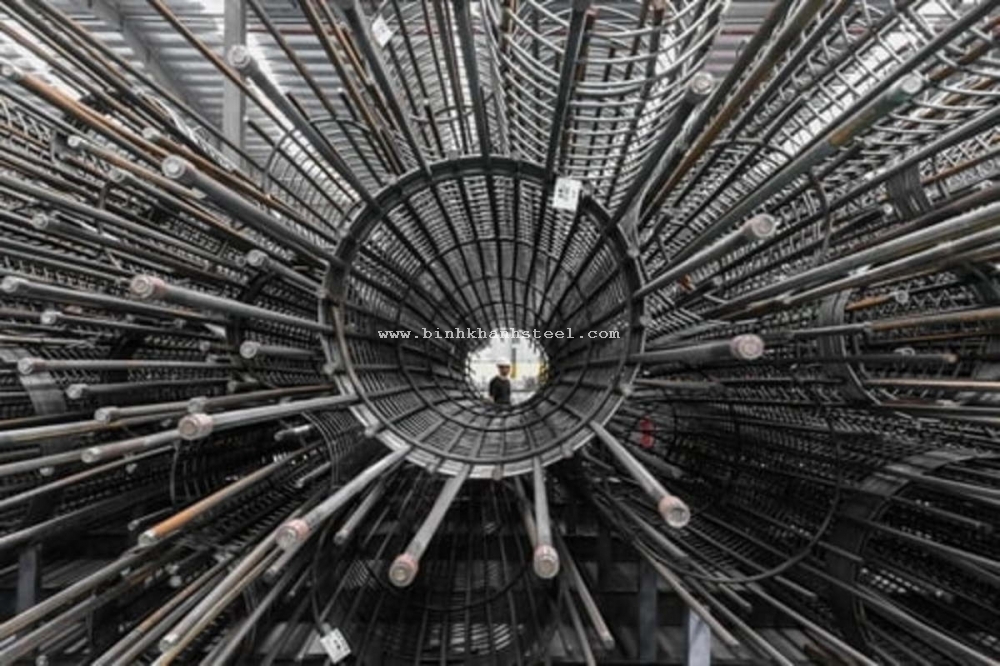


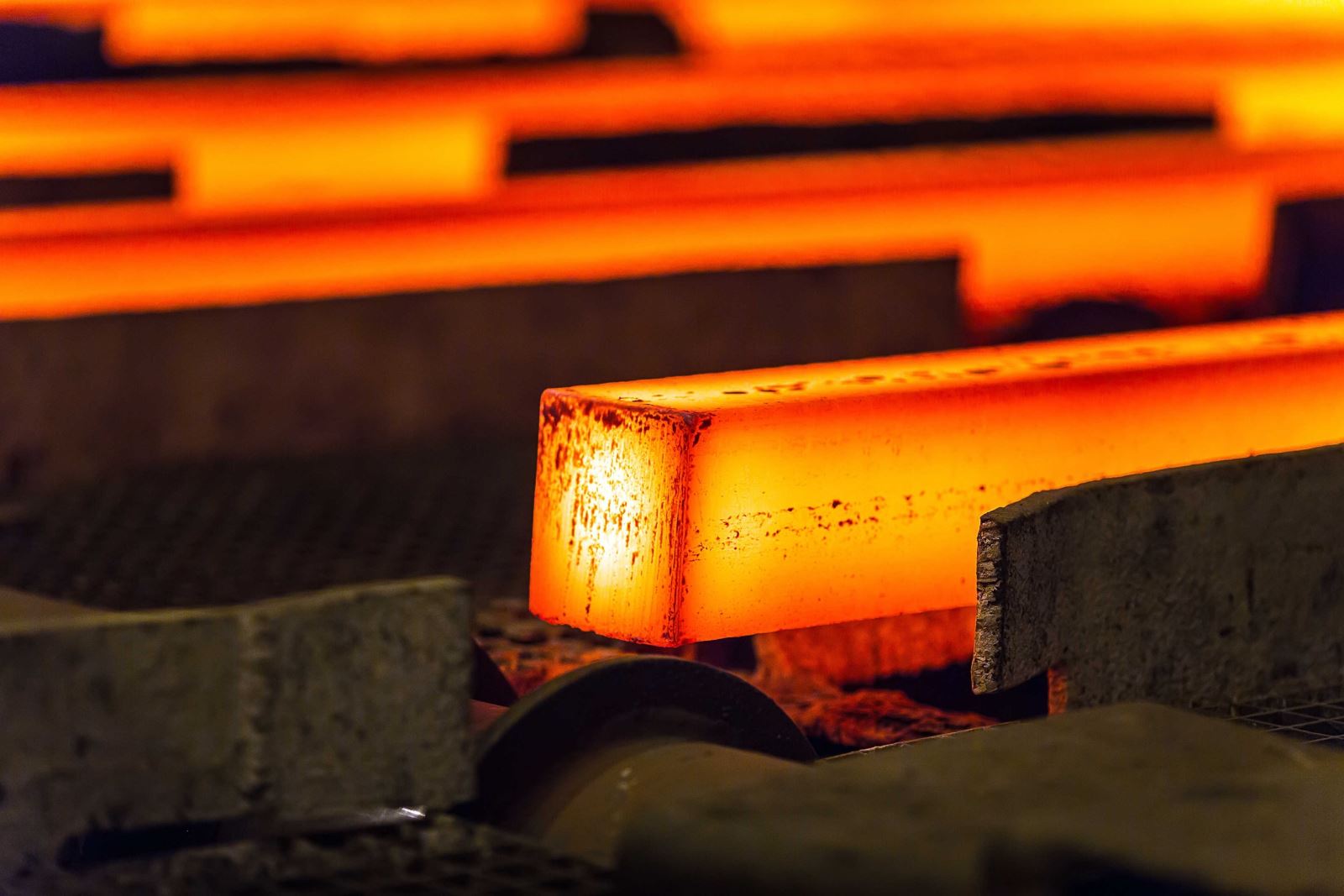
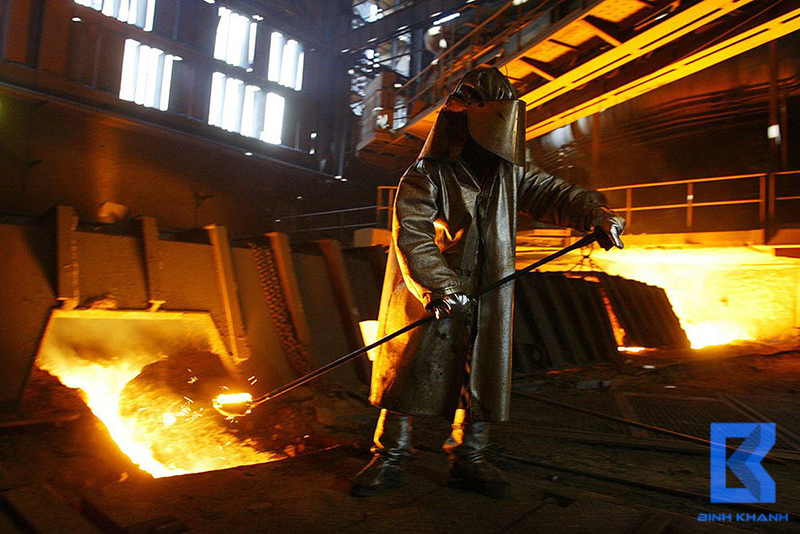

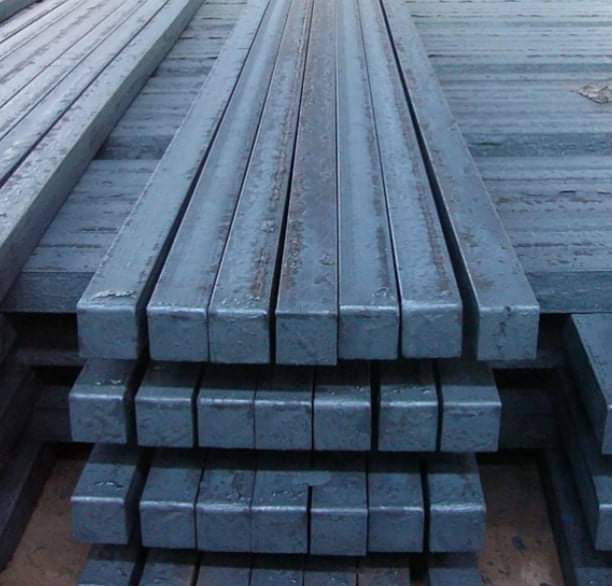

w300.jpg)
